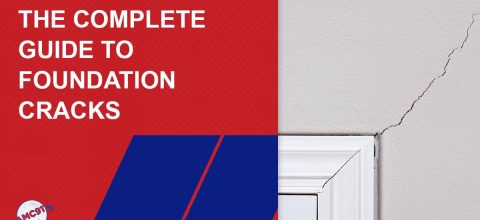Have you ever wondered how long your plates really last before those tiny cracks start to show? You might not notice the slow wear and tear, but those small cracks can turn into big problems — affecting your safety and the look of your table.
Understanding when to replace your plates can save you money and keep your meals safe. Keep reading to discover the signs you shouldn’t ignore and how to make your plates last longer. Your dishes deserve the best care, and so do you.

Credit: amc911.com
Plate Lifespan Factors
How long your plates last depends on several key factors. Cracks and damage don’t just appear out of nowhere—they develop over time due to what the plates are made of, how often you use them, and how well you care for them. Understanding these factors helps you get the most out of your dinnerware and avoid surprise breakages.
Material Types
The type of material your plates are made from greatly affects their durability. Porcelain and stoneware tend to be more resistant to cracks but can chip if dropped. Melamine plates are shatterproof but may scratch easily, which can weaken their surface over time.
Have you noticed your glass plates developing tiny cracks after a few months? Glass is more prone to thermal shock, meaning sudden temperature changes can cause damage. Choosing the right material based on your lifestyle can save you money and frustration in the long run.
Usage Frequency
How often you use your plates plays a big role in how long they last. Plates used daily go through more washing, heating, and handling, increasing the chance of cracks appearing. On the other hand, special occasion plates might stay pristine for years because they’re used less frequently.
Think about your own kitchen habits—do you rotate your plates or stick to a few favorites? Constant use of the same plates can wear them down faster, especially if they’re exposed to high heat or abrasive cleaning.
Care And Maintenance
Proper care extends the life of your plates and prevents cracks. Avoid sudden temperature changes, like moving plates directly from the fridge to a hot oven. Use gentle cleaning methods and avoid harsh scrubbing pads that can weaken the surface.
One trick I’ve found useful is to check plates for small chips regularly. Even a tiny chip can lead to larger cracks if ignored. Do you inspect your plates before use? Taking a moment to look can help you catch problems early and keep your plates looking great longer.
Common Causes Of Cracks
Cracks in plates can happen for several reasons. These cracks reduce the plate’s life and make it unsafe to use. Understanding the common causes helps in preventing damage and extending plate use. The main reasons are thermal shock, physical impact, and manufacturing defects.
Thermal Shock
Thermal shock happens when a plate faces sudden temperature changes. For example, taking a hot plate from the oven and placing it on a cold surface. The rapid change causes stress inside the plate. This stress can lead to cracks or even break the plate. Plates made from certain materials are more sensitive to thermal shock.
Physical Impact
Physical impact occurs when a plate is dropped or hit. Even small impacts can cause tiny cracks that grow over time. Plates often crack after being knocked against hard surfaces or other dishes. Repeated bumps weaken the plate’s structure. Handling plates carefully helps avoid these cracks.
Manufacturing Defects
Some plates may have cracks due to flaws during production. Imperfections in materials or uneven firing can cause weak spots. These defects make plates more prone to cracking under normal use. Checking plates for visible flaws before use can prevent problems. Quality control is important to reduce this risk.
Identifying Plate Damage
Noticing damage on your plates early can save you from unexpected breaks and costly replacements. Plates can show wear in different ways, and some signs are easy to miss if you’re not paying close attention. Understanding how to spot these issues helps you decide if a plate is still safe to use or needs to be retired.
Hairline Cracks
Hairline cracks are thin, almost invisible lines that often appear on the surface of a plate. They might not seem serious at first, but these tiny cracks can grow over time, especially with regular washing or heat exposure.
Try holding your plate up to the light to see if any fine lines appear. If you spot any, consider if you want to keep using it or switch to a safer option. Have you ever wondered how many tiny cracks your plates might already have?
Visible Chips
Chips are easier to detect because they leave noticeable dents or missing pieces on the plate’s edge or surface. These can be sharp and dangerous, especially if you serve food directly from the chipped area.
Using a chipped plate might cause cuts or harbor bacteria in the broken edges. Check your plates carefully after every wash—sometimes chips hide in plain sight. Would you risk a small cut from a chipped dish?
Structural Weakness
Structural weakness is less obvious but equally important. Plates that feel flimsy, bend slightly under pressure, or make unusual sounds when tapped might be compromised internally.
This kind of damage can result from poor quality materials or repeated impacts. If your plate feels different in your hand or shows signs of stress, it’s wise to replace it before it breaks completely. How often do you test the strength of your dishes during daily use?
Extending Plate Durability
Extending the life of your plates prevents cracks and breaks. It saves money and reduces waste. Taking care of plates is simple with the right habits. Small changes can make plates last much longer. Focus on cleaning, handling, and storing plates correctly. These steps protect your dishes from damage.
Proper Cleaning Techniques
Use mild dish soap and warm water for washing plates. Avoid harsh scrubbing with abrasive pads or steel wool. These can scratch the surface and cause cracks. Let plates soak briefly if food is stuck. Hand washing is gentler than a dishwasher for delicate plates. Dry plates with a soft cloth to prevent water spots and weakening.
Safe Handling Practices
Hold plates with both hands to avoid dropping them. Place plates gently in the sink or on counters. Avoid stacking heavy items on top of plates. Use plate holders or racks during drying. Do not use plates for tasks like cutting or hammering. These actions can cause chips or cracks over time.
Storage Tips
Store plates upright in a rack or vertically with dividers. This reduces pressure and prevents scratches. Avoid stacking plates too high or tightly. Use felt or rubber liners between plates for extra protection. Keep plates in a dry, cool place to avoid moisture damage. Proper storage keeps plates safe and extends their use.
When To Replace Plates
Plates usually last several years but cracks mean it’s time to replace them. Cracks can cause bacteria buildup and break easily during use. Regularly check for damage to keep your dishes safe and strong.
When to Replace Plates Deciding when to replace your plates can be a tricky affair. You might find yourself pondering over chipped edges or suspicious hairline cracks. The good news is, with some keen observation and understanding of a few key considerations, you can make an informed decision about whether it’s time to upgrade your dinnerware.Safety Considerations
Safety should always be your top priority when it comes to dinnerware. Cracks and chips can harbor bacteria, which poses health risks. Consider how often your plates are used and washed. Frequent use and exposure to extreme temperatures can cause damage over time. Reflect on the safety of your loved ones; eating from compromised plates can lead to accidental cuts or ingestion of small particles.Signs Of Wear
Visible signs of wear can be a clear indicator that it’s time for new plates. Inspect your plates for discoloration or fading patterns. These can signal a weakening of the material. Feel for rough edges or surfaces; these are a tell-tale sign of wear and potential danger.Cost Vs. Repair
The decision to repair or replace can often come down to cost. Repairing a crack might seem cheaper initially, but consider the longevity and safety of your plates post-repair. Think about the frequency of repairs needed. If you find yourself constantly fixing the same plates, it might be more economical to invest in new ones. Compare the cost of new plates to the price of repair kits or professional services. Sometimes, new plates offer better value for money and peace of mind. Have you ever considered the emotional value of your plates? Sentimental value might sway your decision, but always weigh it against practical safety concerns.
Credit: www.facebook.com

Credit: www.facebook.com
Frequently Asked Questions
How Long Do Ceramic Plates Usually Last?
Ceramic plates can last 10 to 20 years with proper care. Avoid sudden temperature changes and handle them gently to prevent cracks. Regular use and washing may cause wear, but quality ceramics remain durable over time.
What Causes Cracks On Plates To Form?
Cracks on plates often result from thermal shock, impact, or manufacturing defects. Sudden temperature changes or dropping plates can cause stress cracks. Over time, repeated use and washing can weaken plate surfaces, leading to cracks.
Can Cracked Plates Be Safely Used?
Using cracked plates is not recommended as cracks harbor bacteria and weaken structure. Cracks can worsen with heat or pressure, causing breakage. It is safer to replace cracked plates to avoid health risks and accidents.
How To Prevent Plates From Cracking?
To prevent cracks, avoid extreme temperature changes and handle plates with care. Do not overload dishwashers or stack plates too tightly. Using gentle cleaning methods and avoiding sharp utensils helps extend plate life.
Conclusion
Plates can last many years if handled with care. Cracks often appear from drops or sudden temperature changes. Small cracks may not cause problems right away. But deep cracks can make plates unsafe to use. Regularly check your plates for any damage.
Replace cracked plates to avoid accidents or spills. Taking simple steps helps your plates stay strong longer. Clean them gently and store properly to prevent cracks. This way, you enjoy your dishes safely every day.

